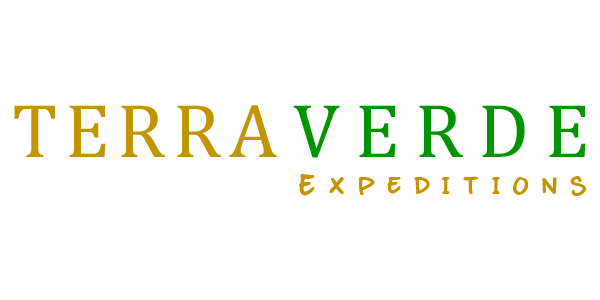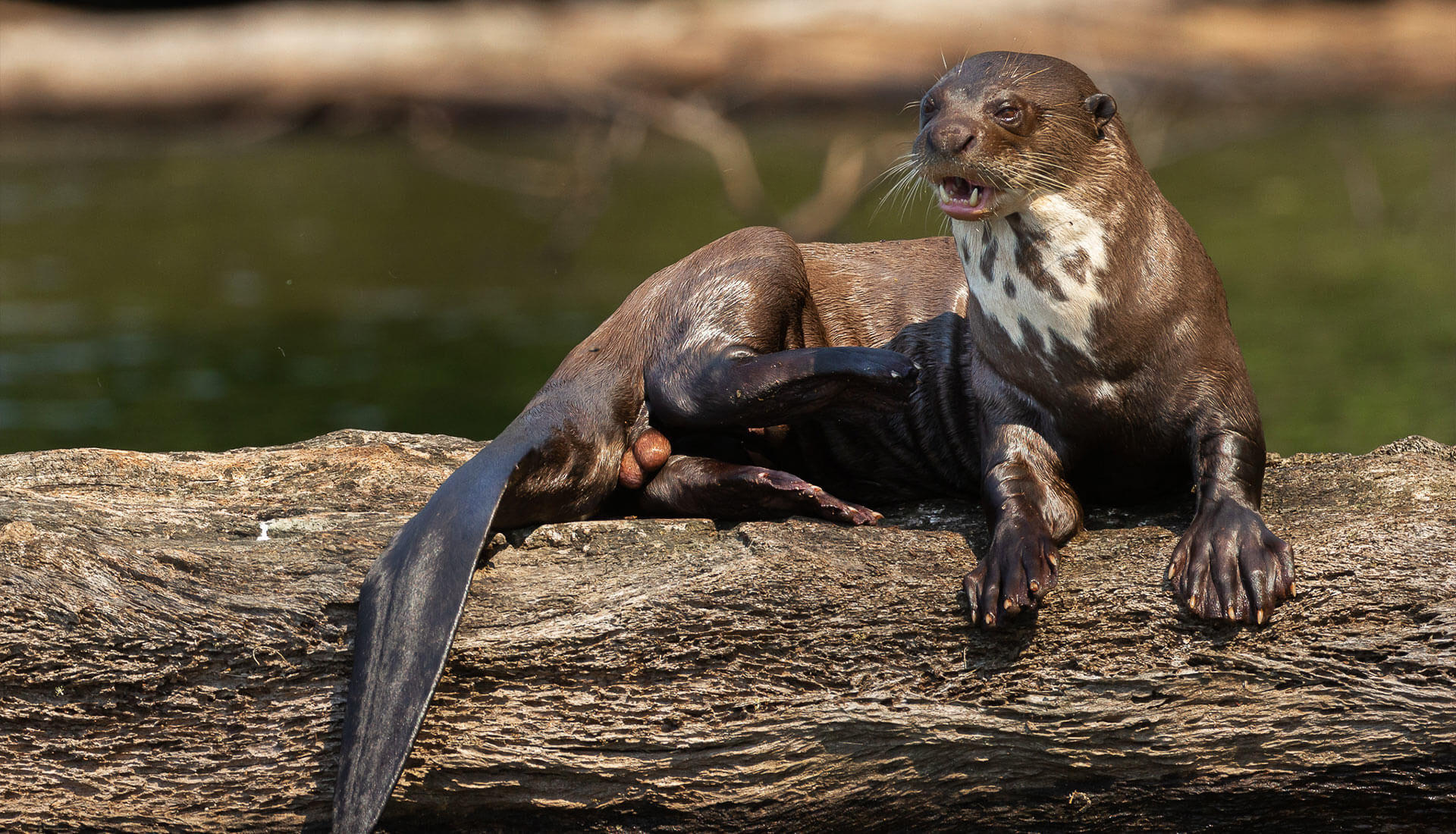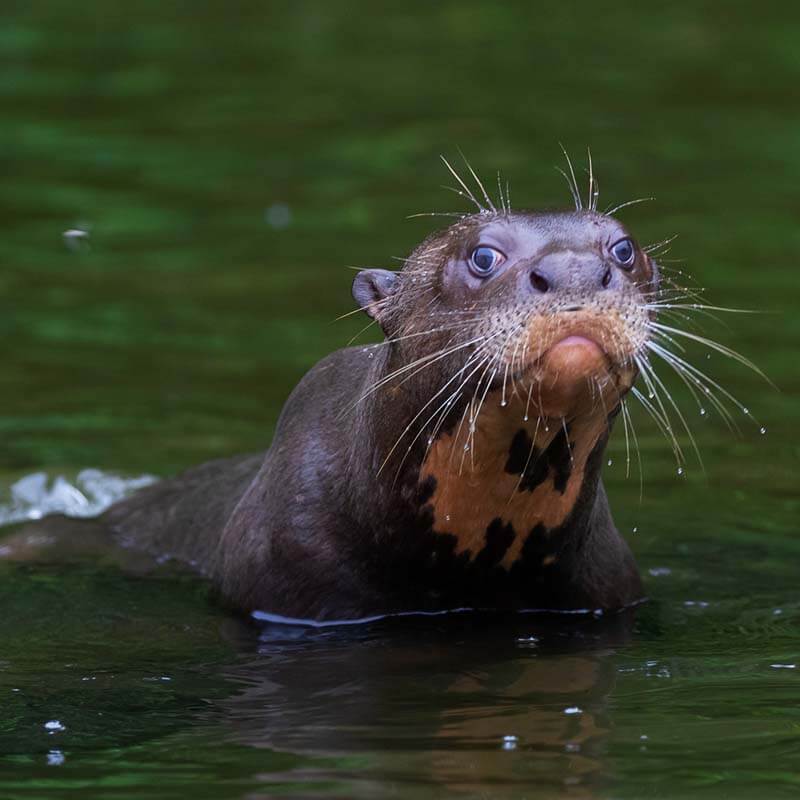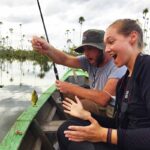River Wolf – Giant Otter of the Tambopata
The river wolf (scientific name: Pteronura brasiliensis) is the largest species in the mustelid family, which includes otters, weasels and ferrets. It is an endemic species of South America, the warm climate and the great rivers with all their fish, are their habitat.
The wolf of Rio, by its extremely social nature, live in families of 3 to 8 individuals, and has even registered families of 20 individuals that hunt together and otters that have traveled 520 km to find a mate.
The river wolf, not having a natural predator, competes with the black alligator for the title of the maximum predator of the Amazonian lakes (cochas), and it is known that these species even come to face physically.
Their main food is the fish of these oxbow lakes, contributing to the trophic balance of the aquatic ecosystem.
In addition, the most representative species of the Amazon, along with the macaw and the otorongo.
Interesting data
Description
It has a unique spot on the neck, which allows easy identification by scientists, and that is how the number of individuals in their species is easily enumerated.
Size
It has a length of 1.5 to 1.5 meters and a weight of between 20 and 33 kilos.
Conservation
It is classified as “Endangered” by IUCN (2008) and has been included since 1973 in Appendix I of the Convention on International Trade in Endangered Species of Wild Fauna and Flora – CITES, a document ratified by all South American countries. Due to the large territory it inhabits, the protection of this species is a complicated task that requires the joint coordination of multiple institutions.
You can see this beautiful species in #ReservaNacionalTambopata, exactly in #LagoTresChimbadas, our guides will also let you know more about this beautiful species, like the endangered danger they are in, since there are currently only 5,000 copies worldwide .
Help us to conserve this beautiful species, it does not cost you a click, do not wait for someone else to do it for you




